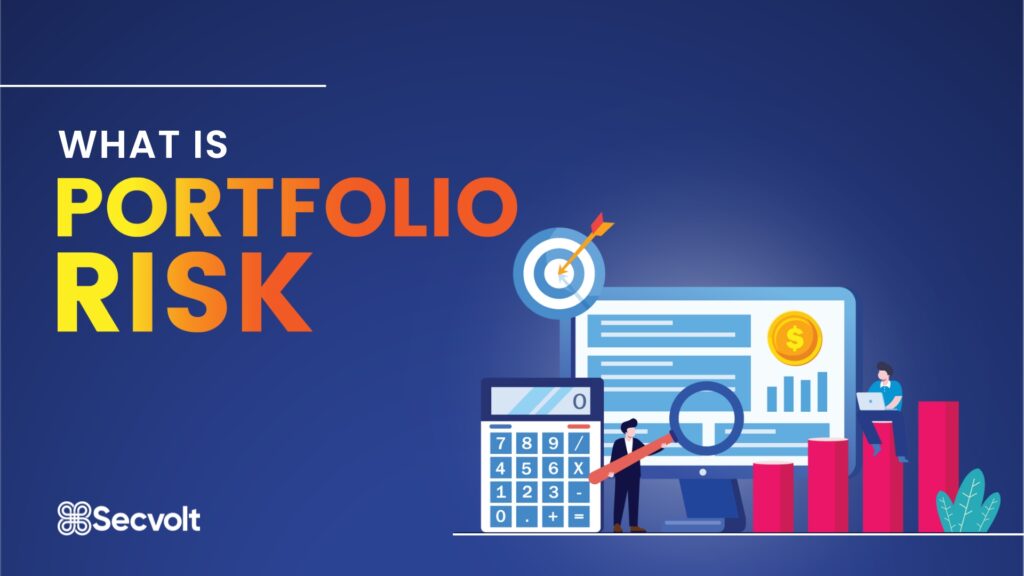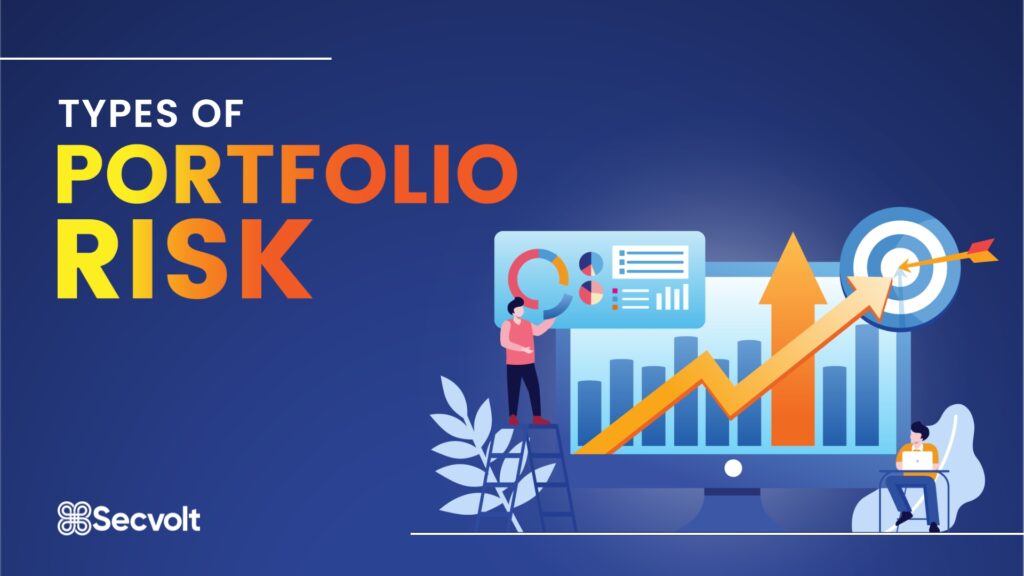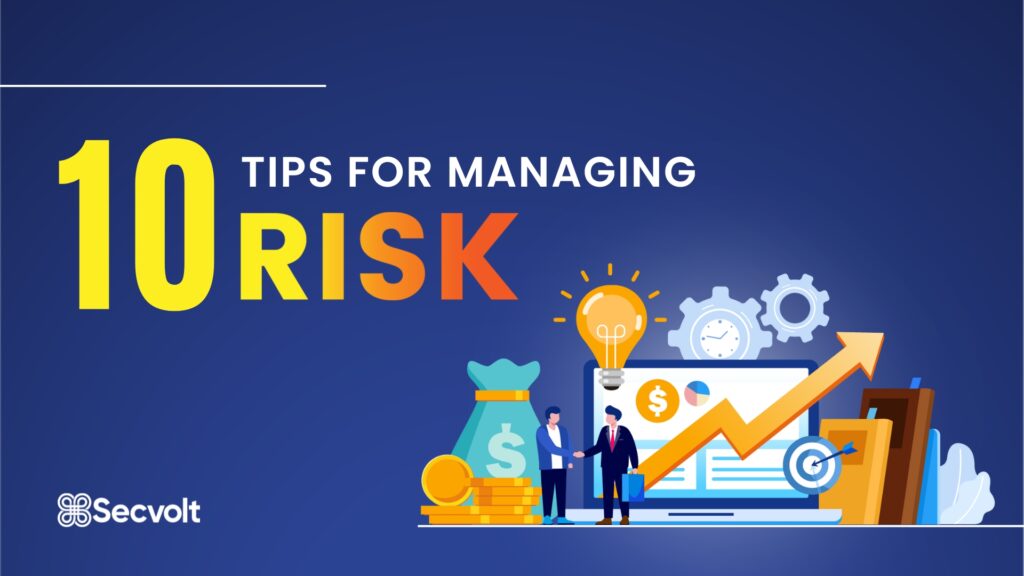
10 Tips for Managing Risk in Portfolio
Every portfolio is organized in some or the other way. It can be planned or changed with the changing environment and needs. The following suggestions may help add structure to your portfolio and provide clarity on how a portfolio can be organized and managed.

What is portfolio risk?
When we talk about investment, it never comes without any risk. So we need to face risk in this investment path too. When you diversify your investments, you are taking and mitigating investment risks, commonly called portfolio risks. The risk could be lowered by building a strategy to invest in any asset. Below are the different portfolio risks you can check for a better understanding.

Types of Portfolio Risk
The following risks are the ones that are involved with your investment plans.
- Market Risk: Everything depends upon how the market is functioning. So far, it is the top risk any portfolio could encounter. This market risk is also called systematic risk. This risk is based on the market and its volatility feature. The market can always go down or up depending on the financial environment.
- Liquidity Risk: This risk is when you cannot sell your investment because of low market value. This can raise a big problem when you need cash for some emergency.
- Concentration Risk: The risk of losing all the money in one asset because you have invested them in a single sector, such as investing all the money in stocks.
- Credit Risk: This is only applicable for debt investment, as it occurs when the company that has issued the bond faces financial difficulties.
- Reinvestment Risk: This risk occurs when you invest in a specific bond at a particular rate and gain high returns. But a falling interest rate can gain high interest.
- Horizon Risk: When you are investing in a single asset for a longer run, you are required to sell all your investment at a meager price in the market. This could cause a high loss.
All these above-mentioned risks result in significant losses. These risks consist of different domains, but eventually, they harm your investments only. So take all your steps with a broader outlook. If you are facing any of the risks listed above, you should definitely try the tips listed below.
If you need some ideas about what to read next, here they are:
- Portfolio Risk Assessment & Risk Management – Why Is It Important?
- The Importance Of Diversifying Your Investment Portfolio
- What is market risk premium and how to calculate it?

10 Tips for managing risk
The below-mentioned tips are to help you in managing all your risks.
1. Adjust timing
Time is another factor in managing the risk, and the retirement timeline differs from the portfolio risk. As we know, interest rates are the biggest threat in economic society, so adjusting the timing could be bound in your favor.
2. Consider Hedged equity
These are mutual funds that minimize the effect of volatility. Managing funds is a challenging task as holding on to the stocks that lean to natural volatility. This task is not so easy, but it could be brought into action.
3. Put options
There are several ways to conduct a particular approach. The most common is to purchase put options, which are best on the underlying stock’s price falling. This option gives you the liability of selling a specific stock at a particular price in the coming future.
4. Stop loss
It orders to protect investors from falling stock prices. There are various types of stops available. Considering a hard stop means that selling a stock at a fixed price that cannot change will protect you from heavy losses. And can also help you in managing the stocks.
5. Dividends
The worst way to protect your stock portfolio is to pay dividends on your stocks. Dividends have historically accounted for a sizable portion of a stock’s total return. It may represent the entire amount of the investment in some cases.
6. Principle protects notes
Principal-protected notes with equity participation rights may appeal to investors concerned about the preservation of their principal. They are fixed-income securities that, like bonds, will return your initial investment if you hold them until maturity.
7. Modern Portfolio Theory (MPT)
It is an investment term that refers to the process of constructing a portfolio. The idea behind seeking high returns with a minimized risk that can be resolved. And investing in non-correlated assets can help to mitigate this risk.
8. Looking at alternatives
Trying a different way of looking at things can also help you invest money. Having an alternative for every sector could help your investment growth. Dividing all your investment into different domains could help you get going.
9. Controlling emotional thinking
Investment is never related to emotions, so there should be no playing with emotions in the matter of investment. This could lead you to a heaping amount of losses. Emotions can control your investments, too, so going with the right emotion can fetch you more controlled emotions and a thinking process.
10. Liquidity
They are the additional ones, as these investment plans provide a volatile nature to each and every asset. The stock market, for example, evolves over time. Having something in cash that could be replaced with another asset could help you.
This has been a ride from talking about several risks and coming up with a bunch of tips to carry on with them as a solution to your problems. So, try to keep checking where you are investing and at which rate. And yes, if all this investment-related stuff gives you a headache, let someone take over your headache. You can check the portfolio risk using the https://calculator.secvolt.com/ link. This could provide you with detailed insights, which would help you manage the risk. Understand that your investment is directly proportional to risk. Risks are scary, but you need to take risks if this could lead you to a better investment and better life.





